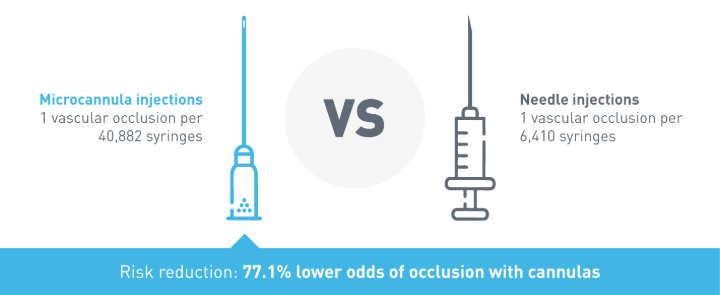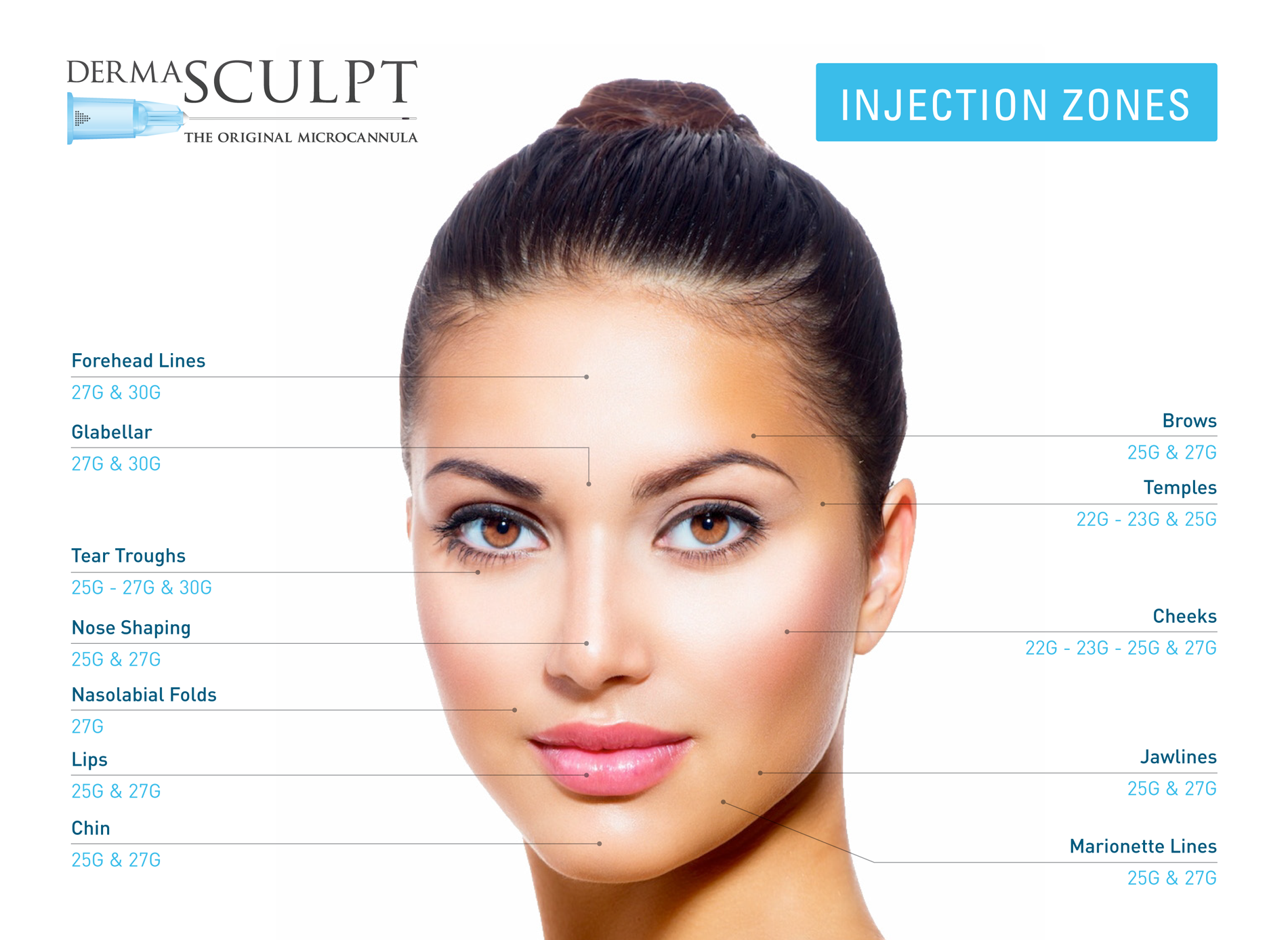The 77% Safety Advantage: Why Leading Injectors are Switching to Microcannulas for Filler Treatments in 2025
June 5, 2025
In aesthetic medicine, few innovations have proven their worth as definitively as microcannulas. A landmark JAMA Dermatology study examining 1.7 million filler injections found that microcannulas reduce vascular occlusion risk by 77%; from 1 in 6,410 procedures with needles to just 1 in 40,882 with cannulas. Today, this safety advantage has driven cannulas to capture 65% of the aesthetic injection market. For practitioners seeking to minimize complications while maximizing patient comfort, the data speaks volumes.
Understanding the 77% Safety Advantage
The pivotal study published in JAMA Dermatology (Alam et al., 2021) represents one of the most comprehensive analyses of injection safety to date. Involving 370 board-certified dermatologists with an average of 22.3 years of experience, the research examined real-world outcomes across 1.7 million syringe injections.
Alam M, Kakar R, Dover JS, et al. Rates of vascular occlusion associated with using needles vs cannulas for filler injection. JAMA Dermatol. 2021;157(2):174-180. doi:10.1001/jamadermatol.2020.5102
The results were striking:

Perhaps equally important, the study found that when occlusions did occur, the vast majority were minor and resolved without lasting complications.
"Did you know? 65% of aesthetic filler injections are now performed with cannulas—up from less than 20% five years ago. If you're not using microcannulas, you're already in the minority."
Cannula Market Adoption

The Complete Patient Experience
While safety drives adoption, practitioners report multiple benefits that enhance both outcomes and satisfaction:
Minimal Bruising
Blunt tips push vessels aside rather than piercing them
Fewer Entry Points
One entry point can treat large areas via fanning
Enhanced Control
Flexible cannulas navigate challenging anatomy smoothly
Faster Recovery
Patients return to normal activities immediately
Clinical Best Practices: Expert Consensus Recommendations
A multi-specialty panel of early adopters established optimal techniques:
Gauge Selection by Area:
- Lower eyelid: 27G or 25G (precision work)
- Midface: 25G or 22G (efficient coverage)
- Temples: 22G (deeper placement)
- Hands: 25G or 22G (even distribution)
Gauge selection may vary based on injector preference and product viscosity. Refer to the complete chart below for more details.

This is why DermaSculpt offers the complete range of recommended gauges, ideal for versatile mid-face treatments where precision meets efficiency.
Entry Point Strategy
Experienced practitioners report that strategic entry point placement can minimize patient discomfort while maximizing treatment efficiency. For pan-facial rejuvenation, as few as 2-4 entry points may suffice when using appropriate microcannula lengths.
Market Validation: The Tipping Point Is Here
The numbers tell the story:
65%
market share for cannulas in 2023.
$294.6 million
projected market by 2030.
41%
market share in North America.
Fastest Growth
in dermatology applications.
While you're reading this, your peers in the 65% majority are treating patients with significantly less risk. Can you afford to remain in the shrinking minority?
The Bottom Line
The evidence is clear: microcannulas offer significant safety advantages while maintaining excellent aesthetic outcomes. With a 77% reduction in vascular occlusion risk and 65% market adoption, the question isn't whether to incorporate microcannulas; it's how quickly you can make the transition.
The global aesthetic market continues its rapid expansion, with patients increasingly aware of safety differences between injection techniques. Practitioners who embrace evidence-based innovations position themselves at the forefront of patient care.